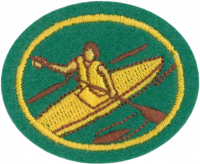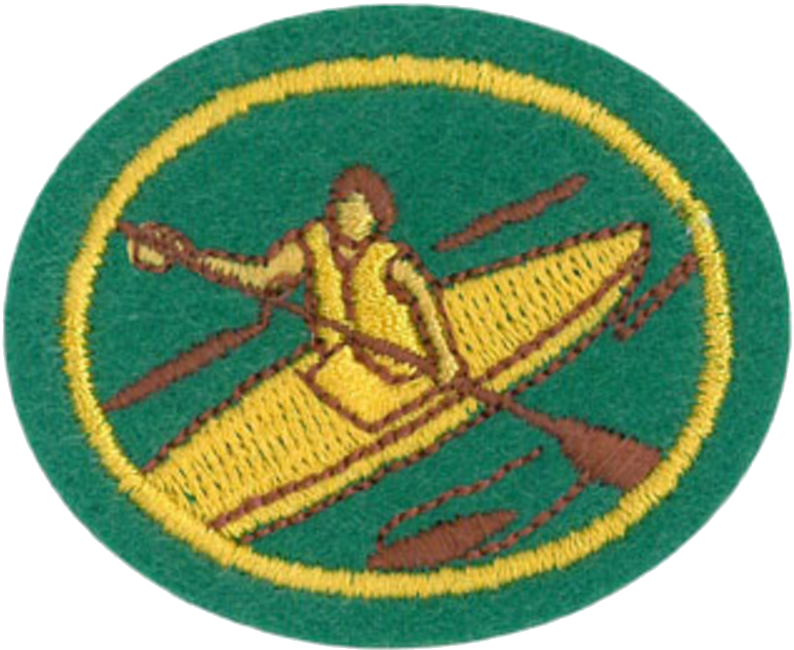Difference between revisions of "AY Honors/Kayaking/Answer Key/es"
From Pathfinder Wiki
(Created page with "{{clear}}") |
(Updating to match new version of source page) |
||
| (16 intermediate revisions by 2 users not shown) | |||
| Line 1: | Line 1: | ||
| − | < | + | {{HonorSubpage}} |
| + | <!--{{Honor_Master|honor=Kayaking|master=Aquatic}}--> | ||
| + | <section begin="Body" /> | ||
| + | {{ansreq|page={{#titleparts:{{PAGENAME}}|2|1}}|num=Prologue|dispreq= }} | ||
<noinclude></noinclude> | <noinclude></noinclude> | ||
| − | + | <!-- Prerrequisito: Especialidad de Natación II--> | |
| − | + | {{honor_prerequisite|honor=Swimming - Intermediate|displayname=Natación II}} | |
| − | |||
| − | |||
| − | |||
| − | |||
| − | |||
| − | |||
| − | |||
| − | |||
| − | |||
| − | |||
| − | |||
| − | |||
| − | |||
| − | |||
| − | <!-- | ||
| − | {{honor_prerequisite | ||
<noinclude></noinclude> | <noinclude></noinclude> | ||
| − | {{CloseReq}} <!-- | + | {{CloseReq}} <!-- Prologue --> |
{{ansreq|page={{#titleparts:{{PAGENAME}}|2|1}}|num=1}} | {{ansreq|page={{#titleparts:{{PAGENAME}}|2|1}}|num=1}} | ||
<noinclude></noinclude> | <noinclude></noinclude> | ||
| − | <!-- 1. | + | <!-- 1. Demostrar de manera satisfactoria al examinador que tiene conocimiento de las distintas clases de kayaks (Slalom, ríos, turismo, mar), los usos de cada uno y el equipo necesario para la seguridad en los kayaks (casco, chaleco salvavidas, faldón, lazada de la proa y popa, equipo de flotación para kayaks). --> |
| − | |||
| − | |||
| − | {{clear}} | + | {{clear}} |
{{clear}} | {{clear}} | ||
| Line 33: | Line 18: | ||
{{clear}} | {{clear}} | ||
| − | + | {{clear}} | |
| − | |||
| − | {{clear}} | + | {{clear}} |
{{clear}} | {{clear}} | ||
| Line 48: | Line 32: | ||
{{ansreq|page={{#titleparts:{{PAGENAME}}|2|1}}|num=2}} | {{ansreq|page={{#titleparts:{{PAGENAME}}|2|1}}|num=2}} | ||
<noinclude></noinclude> | <noinclude></noinclude> | ||
| − | <!-- 2. | + | <!-- 2. Demostrar la capacidad de entrar y salir de un kayak: --> |
| − | |||
<noinclude></noinclude> | <noinclude></noinclude> | ||
{{ansreq|page={{#titleparts:{{PAGENAME}}|2|1}}|num=2a}} | {{ansreq|page={{#titleparts:{{PAGENAME}}|2|1}}|num=2a}} | ||
| Line 85: | Line 68: | ||
{{ansreq|page={{#titleparts:{{PAGENAME}}|2|1}}|num=3}} | {{ansreq|page={{#titleparts:{{PAGENAME}}|2|1}}|num=3}} | ||
<noinclude></noinclude> | <noinclude></noinclude> | ||
| − | <!-- 3. | + | <!-- 3. Demostrar la capacidad para realizar las siguientes brazadas: --> |
<noinclude></noinclude> | <noinclude></noinclude> | ||
{{ansreq|page={{#titleparts:{{PAGENAME}}|2|1}}|num=3a}} | {{ansreq|page={{#titleparts:{{PAGENAME}}|2|1}}|num=3a}} | ||
| Line 93: | Line 76: | ||
{{CloseReq}} <!-- 3a --> | {{CloseReq}} <!-- 3a --> | ||
{{ansreq|page={{#titleparts:{{PAGENAME}}|2|1}}|num=3b}} <!--T:23--> | {{ansreq|page={{#titleparts:{{PAGENAME}}|2|1}}|num=3b}} <!--T:23--> | ||
| − | <noinclude></noinclude> | + | <noinclude></noinclude> |
{{clear}} | {{clear}} | ||
| Line 105: | Line 88: | ||
{{CloseReq}} <!-- 3c --> | {{CloseReq}} <!-- 3c --> | ||
{{ansreq|page={{#titleparts:{{PAGENAME}}|2|1}}|num=3d}} <!--T:26--> | {{ansreq|page={{#titleparts:{{PAGENAME}}|2|1}}|num=3d}} <!--T:26--> | ||
| − | <noinclude></noinclude> | + | <noinclude></noinclude> |
{{clear}} | {{clear}} | ||
| Line 121: | Line 104: | ||
{{ansreq|page={{#titleparts:{{PAGENAME}}|2|1}}|num=4}} | {{ansreq|page={{#titleparts:{{PAGENAME}}|2|1}}|num=4}} | ||
<noinclude></noinclude> | <noinclude></noinclude> | ||
| − | <!-- 4. | + | <!-- 4. Explicar los pasos que envuelven la vuelta esquimal y demostrar el buen método de hacerla. --> |
| − | + | ||
| + | {{clear}} | ||
{{clear}} | {{clear}} | ||
| Line 128: | Line 112: | ||
{{clear}} | {{clear}} | ||
| − | |||
| − | + | ||
<noinclude></noinclude> | <noinclude></noinclude> | ||
| Line 136: | Line 119: | ||
{{ansreq|page={{#titleparts:{{PAGENAME}}|2|1}}|num=5}} | {{ansreq|page={{#titleparts:{{PAGENAME}}|2|1}}|num=5}} | ||
<noinclude></noinclude> | <noinclude></noinclude> | ||
| − | <!-- 5. | + | <!-- 5. Explicar cómo reparar un agujero en fibra de vidrio: --> |
<noinclude></noinclude> | <noinclude></noinclude> | ||
{{ansreq|page={{#titleparts:{{PAGENAME}}|2|1}}|num=5a}} | {{ansreq|page={{#titleparts:{{PAGENAME}}|2|1}}|num=5a}} | ||
| Line 153: | Line 136: | ||
{{ansreq|page={{#titleparts:{{PAGENAME}}|2|1}}|num=6}} | {{ansreq|page={{#titleparts:{{PAGENAME}}|2|1}}|num=6}} | ||
<noinclude></noinclude> | <noinclude></noinclude> | ||
| − | <!-- 6. | + | <!-- 6. Después de completar un mínimo de dos sesiones de entrenamiento, completar ya sea<br>a. Un viaje de la noche a la mañana en kayak<br>b. Dos días de viaje (uno de ellos debe incluir aguas rápidas)--> |
| − | |||
{{clear}} | {{clear}} | ||
| Line 163: | Line 145: | ||
{{CloseReq}} <!-- 6 --> | {{CloseReq}} <!-- 6 --> | ||
<noinclude></noinclude> | <noinclude></noinclude> | ||
| − | == | + | ==Referencias== |
| − | |||
| − | |||
| − | |||
<noinclude></noinclude> | <noinclude></noinclude> | ||
| − | + | ||
| + | [[Category:Instructor Required{{GetLangSuffix}}|{{SUBPAGENAME}}]] | ||
| + | {{CloseHonorPage}} | ||
Latest revision as of 21:33, 1 January 2023
Especialidad de Natación II
Para consejos e instrucciones, véase Natación II.
1
Demostrar de manera satisfactoria al examinador que tiene conocimiento de las distintas clases de kayaks (Slalom, ríos, turismo, mar), los usos de cada uno y el equipo necesario para la seguridad en los kayaks (casco, chaleco salvavidas, faldón, lazada de la proa y popa, equipo de flotación para kayaks).
2
Demostrar la capacidad de entrar y salir de un kayak:
2a
De una playa
2b
Desde un muelle o desembarque
2c
De aguas profundas
3
Demostrar la capacidad para realizar las siguientes brazadas:
3a
Recto hacia adelante y hacia atrás con el remo
3b
Remando de izquierda y derecha hacia adelante y hacia atrás
3c
Mover en brazada (amplia)
3d
Brazada de soporte
3e
Remando de cruzar la corriente
4
Explicar los pasos que envuelven la vuelta esquimal y demostrar el buen método de hacerla.
5
Explicar cómo reparar un agujero en fibra de vidrio:
5a
De manera permanente en un taller (fibra de vidrio)
5b
En una reparación de emergencia en la orilla del río (cinta adhesiva)
6
Después de completar un mínimo de dos sesiones de entrenamiento, completar ya sea
- a. Un viaje de la noche a la mañana en kayak
- b. Dos días de viaje (uno de ellos debe incluir aguas rápidas)


